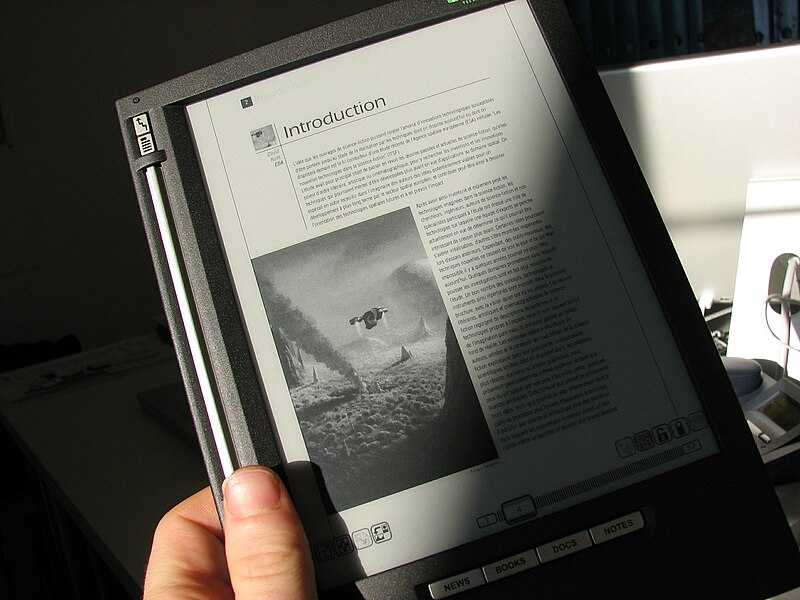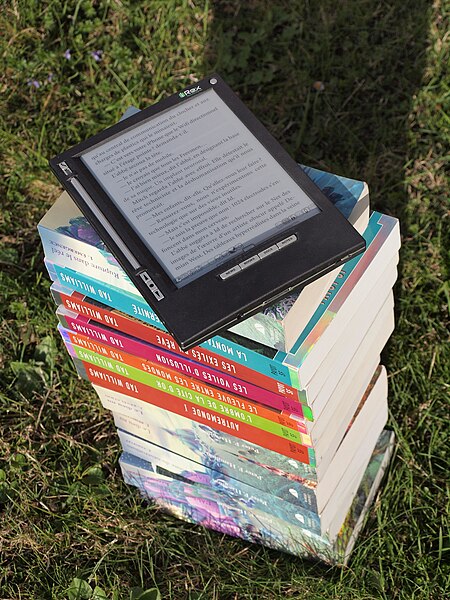“Books - the best antidote against the marsh-gas of boredom and vacuity.”
We arrived upon Mother Earth with no knowledge about absolutely anything but little by little we began to learn. First it was through pictures on cave or simply called cave drawings then through more modifications alphabets or letter came to be used.
When writing developed and began on leaf and other materials and people began to store records of things in writing they had to write everything with hand, not an easy job even with the invention of ink but still employed by our ancestors. Then in 1844, both Canadian inventor Charles Fenerty and German inventor F.G. Keller had invented the machine and process for pulping wood for the use in paper making. This would end the nearly 2000-year use of pulped rags and start a new era for the production of newsprint and eventually all paper out of pulped wood. It definitely did. Book began to be written on these papers. With more modifications the present state of textbooks or books in the general sense was before us.
But all this did a giant flip when computer were invented. These machines changed the face of the human civilization to such an extent that people rarely have any time to pick up book (now don’t go about screaming your heads off here, I mean it in the general sense). Apart from the textbooks and the occasional reference academics material or something that is related to that particular persons work, the general public doesn’t seem to want to pick up a book anymore in this technological age when computers, video games, televisions, movies can easily distract us.
Now a lot of people love to read book and I can effectively say that they feel at a loss whenever they travel for they usually can’t decide on what books they want to take with them and what not and would result in a hazardous (I know I’m probable exaggerating) situation with a lot more load than they previously would have planned. Take it from me I am an avid book lover and I experience the same dilemma whenever a travelling is on the cards. To ease us in these situations technology presents us with a new version of reading books, i.e., your one and only E-books.
At first these e-book or electronic books were only meant for technical or official matters but through time were available for the general public. It was in 1993 Zahur Klemath Zapata develops the first software to read digital books. Physical books can now be availed by the general public via the internet.
 One just needs an e-book reader (I prefer Adobe Reader) to read these electronic books. Although there are a variety of formats of these e-books available like .pdf, .lit, .epub, .rtf and many more. A writer or publisher has many options when it comes to choosing a format for production. Every format has its proponents and champions, and debates over which format is best can become intense.
One just needs an e-book reader (I prefer Adobe Reader) to read these electronic books. Although there are a variety of formats of these e-books available like .pdf, .lit, .epub, .rtf and many more. A writer or publisher has many options when it comes to choosing a format for production. Every format has its proponents and champions, and debates over which format is best can become intense. As of 2009, new marketing models for e-books were being developed and dedicated reading hardware was produced. E-books (as opposed to ebook readers) have yet to achieve global distribution. In the United States, as of September 2009, the Amazon Kindle model and Sony's PRS-500 were the dominant e-reading devices. By March 2010, some reported that the Barnes & Noble Nook may be selling more units than the Kindle. On January 27, 2010 Apple, Inc. launched a multi-function device called the iPad and announced agreements with five of the six largest publishers that would allow Apple to distribute e-books. However, many publishers and authors have not endorsed the concept of electronic publishing, citing issues with demand, piracy and proprietary devices.
In July 2010, online bookseller Amazon.com reported sales of ebooks for its proprietary Kindle outnumbered sales of hardcover books for the first time ever during the second quarter of 2010, saying it sold 140 e-books for every 100 hardcover books, including hardcovers for which there was no digital edition. In July this number had increased to 180 Kindle ebooks per 100 hardcovers. Paperback book sales are still much larger than either hardcover or e-book; the American Publishing Association estimated e-books represented 8.5% of sales as of mid-2010. In Canada, the option of ebook publishing took a higher profile when the novel, The Sentamentalists, won the prestigious national Giller Prize. Owing to the small scale of the novel's independent publisher, the book was initially not widely available in printed form, but the ebook edition had no such problems with it becoming the top-selling title for Kobo devices.
These e-books aside another format of book availability, i.e., Audiobooks. An audiobook or audio book is a recording of a text being read. It is not necessarily an exact audio version of a book or magazine. Spoken audio has been available in school and public libraries and to a lesser extent in music shops for a long time. It was not until the 1980s that the medium began to attract book retailers, and then book retailers started displaying audiobooks on bookshelves rather than in separate displays.
Audiobooks are distributed on CDs, cassette tapes, downloadable digital formats (e.g., MP3 (.mp3), Windows Media Audio (.wma), and Advanced Audio Coding (.aac)). In 2005 cassette-tape sales were 16% of the audiobook market, with CD sales accounting for 74% of the market and downloadable audio books accounting for approximately 9%. In the United States, a sales survey (performed by the Audio Publishers' Association in the summer of 2006 for the year 2005) estimated the industry to be worth 871 million US dollars. Current industry estimates are around two billion US dollars at retail value per year. In recent years, the Internet has introduced another powerful means of delivery for audiobooks and many titles are now available on-line, as downloads and as audio streams.
Sometimes audiobook format is available simultaneously with book publication. There are 50,000 titles on cassette, CD or digital format. Unabridged audiobooks are word for word readings of a book, while abridged audiobooks have text removed by the abridger. Abridgements may be wanted to reduce the cost or for other reasons, but are also criticized for being incomplete versions of the original work. The increasing use of digital formats for audiobook recording has led to much less abridgment of texts, the most common reason cited for abridgment was the cost of production and with digital recordings being stored as data rather than on discs or tapes, the differential in cost of producing the full text was minimised. Audiobooks may come as fully dramatized versions of the printed book, sometimes calling upon a complete cast, music, and sound effects. Each spring, the Audie Awards are given to the top nominees for performance and production in several genre categories. Relatedly, a dramatized audio adaptation of a book is one form of an audio drama.
Audiobooks have been used to teach children to read and to increase reading comprehension. Not only that but it also helps to improve that said language pronunciation. Audio books are considered a valuable learning tool because of their format. Unlike traditional books or a video program, one can learn from an audiobook while doing other tasks, although it should be noted that this can detract from the primary task, assuming the learning is not the main activity. Such multitasking is feasible when doing mechanical tasks that do not require much thought and have only little or no chance of an emergency arising. Such tasks include doing the laundry and exercising indoors, among others. The most popular general use of audiobooks by adults is when driving an automobile or traveling with public transport, as an alternative to radio. Many people listen as well just to relax or as they drift off into sleep.
Thus people come and go in life even the technology that is the latest at time would become old and be discarded when newer versions are produced but books stay. Time after time they may change their shape, size and format but they are a constant entity of life.




No comments:
Post a Comment